1. 构建项目
使用Spring Boot快速构建一个Web工程,并导入与操作Excel相关的POI包以及一些常用的工具类包,pom文件中添加如下一些依赖:
org.apache.poi
poi
3.9
org.apache.poi
poi-ooxml
3.9
org.apache.commons
commons-lang3
3.3.2
com.google.collections
google-collections
1.0
2. 自定义Excel注解
使用注解的形式,自定义一些与操作Excel相关的基本信息,如生成Excel模板时,需要有哪些字段名、字段标题、字段之间的排序、字段中内容的位置、对齐方式等信息。然后通过在JavaBean中的需要的字段对应的getter方法上添加这些注解,就可以将其标记为Excel相关的字段。自定义注解内容主要如下(为了节省篇幅,一下代码中的注解已删除,详细代码可以看下载附件)
@Target({ElementType.FIELD,ElementType.TYPE,ElementType.METHOD})
@Retention(RetentionPolicy.RUNTIME)
public @interface ExcelField {
String value() default "";
String title();
int type() default 0;
int align() default 0;
int sort() default 0;
String dictType() default "";
Class> fieldType() default Class.class;
int[] groups() default {};
}
3. 通过反射创建Excel模板
使用反射的方式获取类的信息、类中方法、属性,为了创建一个可供用户填写的Excel模板,我们需要在模板中定义系统需要收集的数据字段,即在JavaBean中,通过注解定义的相关字段。伪代码及关键代码如下:
public ExportExcel(String title, Class> cls, int type, int... groups){
// Get annotation field
Field[] fs = cls.getDeclaredFields();
for (Field f : fs){
//获取字段上加的@Excel注解
ExcelField ef = f.getAnnotation(ExcelField.class);
if (ef != null && (ef.type()==0 || ef.type()==type)){
//根据字段注解中配置的groups进行分组
//....
}else{
//若无group属性,则直接将字段和对应的注解加入到一个全局的注解链表中,用于之后进行统一的排序
annotationList.add(new Object[]{ef, f});
}
}
}
// Get annotation method
Method[] ms = cls.getDeclaredMethods();
for (Method m : ms){
//获取方法上的注解
ExcelField ef = m.getAnnotation(ExcelField.class);
if (ef != null && (ef.type()==0 || ef.type()==type)){
//操作同对字段的操作
}else{
annotationList.add(new Object[]{ef, m});
}
}
}
// 对字段进行排序
Collections.sort(annotationList, new Comparator() {
//排序规则
});
// Initialize
List headerList = Lists.newArrayList();
for (Object[] os : annotationList){
//获取注解title属性值
String t = ((ExcelField)os[0]).title();
//将字段名称保存在一个list中,交给初始化方法使用
headerList.add(t);
}
//初始化操作,创建Excel,设置文件名称,表格标题,表头内容及单元格的格式等信息
initialize(title, headerList);
}
4. 导入Excel文件
导入Excel文件,意味着需要将一个根据我们生成模板填好的Excel文件导入到系统中。在这个过程中,需要使用一个接口去接收文件,并对文件进行解析。在Excel文件中,每一行都对应着我们定义的一个实体对象,所以解析之后,我们得到的是一个存放着多个对象的List。
在解析文件的过程中,首先需要对文件格式校验,保证是一个有效的Excel文件,然后循环读取每一行的数据,并将其赋值给对象。
5. 导出Excel文件
导出Excel的原理同导出模板一样,只是需要将数据填充到Excel文件中。填充数据过程中,还是需要通过@Excel注解将JavaBean中的字段找出,并将值设置到单元格中
6. 测试
1. 定义实体类并为其中字段方法添加@Excel注解
public class User {
private String userName;
private String nickName;
private Integer age;
private Date birth;
@NotNull(message = "User Name 不能为空")
@ExcelField(title="User Name", align=2, sort=1)
public String getUserName() {
return userName;
}
public void setUserName(String userName) {
this.userName = userName;
}
@ExcelField(title="Nick Name", align=2, sort=2)
public String getNickName() {
return nickName;
}
public void setNickName(String nickName) {
this.nickName = nickName;
}
@ExcelField(title="Age", align=2, sort=3)
public Integer getAge() {
return age;
}
public void setAge(Integer age) {
this.age = age;
}
@JsonFormat(pattern = "mm/dd/YYYY")
@NotNull(message="Birth Day不能为空")
@ExcelField(title="Birth Day", align=2, sort=4)
public Date getBirth() {
return birth;
}
public void setBirth(Date birth) {
this.birth = birth;
}
}
2. 定义接口方法
1. 下载输入数据的模板
@RequestMapping("import/template")
public void importFileTemplate(HttpServletResponse response){
try {
//定义文件名称
String fileName = "User_Data_import_template.xlsx";
List list = Lists.newArrayList();
new ExportExcel("User Data", User.class, 1).setDataList(list).write(response, fileName).dispose();
} catch (IOException e) {
e.printStackTrace();
}
}
2. 导入Excel文件到系统
@RequestMapping(value = "import",method = RequestMethod.POST)
public void importFile(MultipartFile multipartFile){
try {
int successNum = 0;
int failureNum = 0;
StringBuilder failureMsg = new StringBuilder();
ImportExcel ei = new ImportExcel(multipartFile, 1, 0);
List list = ei.getDataList(User.class);
for (User user : list){
try{
//to do: 保存/处理数据
//userService.save(user);
logger.info(user.toString());
successNum++;
}catch(ConstraintViolationException ex){
failureNum++;
}catch (Exception ex) {
failureNum++;
}
}
if (failureNum>0){
failureMsg.insert(0, ", Failures: "+failureNum);
}
logger.info("Had Operation "+successNum+" Data;"+" "+"Failure "+failureNum);
} catch (Exception e) {
logger.error("导入失败",e);
}
}
3. 导出Excel文件
@RequestMapping("export")
public void export(HttpServletResponse response){
try {
String fileName = "User Data"+ DateUtils.getDate("yyyyMMddHHmmss")+".xlsx";
List users=new ArrayList<>();
User user1=new User();
user1.setUserName("小明");
user1.setNickName("猪小明");
user1.setAge(20);
user1.setBirth(DateUtils.parseDate("1992-10-10"));
users.add(user1);
User user2=new User();
user2.setUserName("小红");
user2.setNickName("小小红");
user2.setAge(18);
user2.setBirth(DateUtils.parseDate("1998-11-09"));
users.add(user2);
new ExportExcel("Test Over View Define", User.class,2).setDataList(users).write(response, fileName).dispose();
} catch (Exception e) {
}
}
3. 演示
端口号可以自己通过在application.properties文件中,添加server.port=8000进行定义
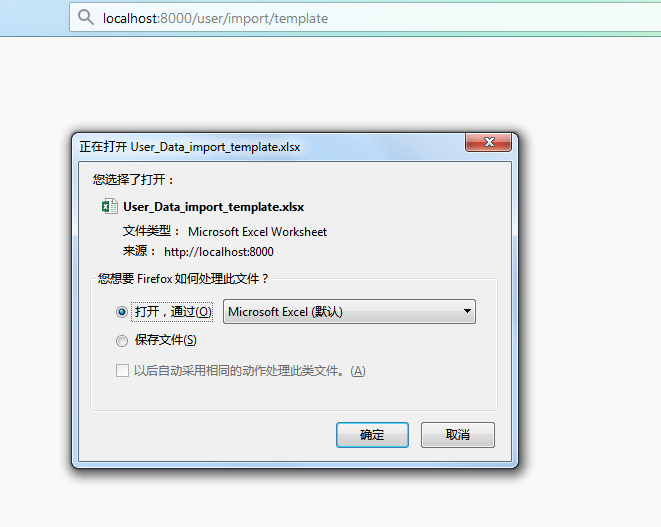
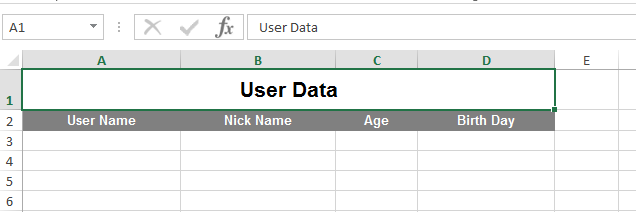
编辑Excel文件,并通过接口测试工具Postman访问接口localhost:8000/user/import:

接口测试工具中,上传文件,并访问:
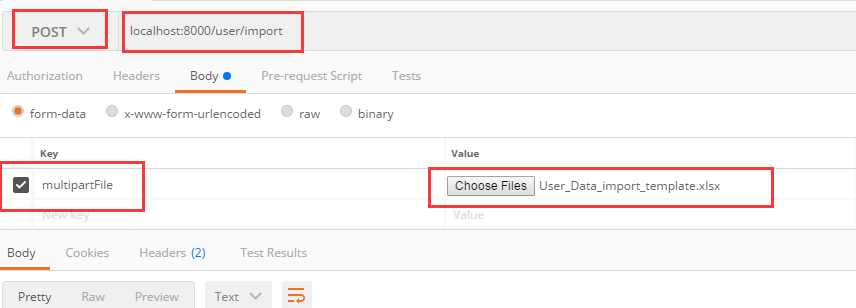
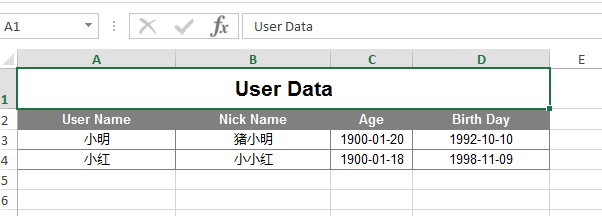
上传之后,通过日志输出文件解析的结果:
2017-11-24 19:56:15.186 INFO 37428 --- [nio-8000-exec-5] com.shexd.Controller.UserController : User{userName='小明', nickName='猪小明', age=18, birth=1992-10-09}
2017-11-24 19:56:15.187 INFO 37428 --- [nio-8000-exec-5] com.shexd.Controller.UserController : User{userName='蘑菇头', nickName='小蘑菇', age=21, birth=1996-09-25}
2017-11-24 19:56:15.187 INFO 37428 --- [nio-8000-exec-5] com.shexd.Controller.UserController : Had Operation 2 Data; Failure 0
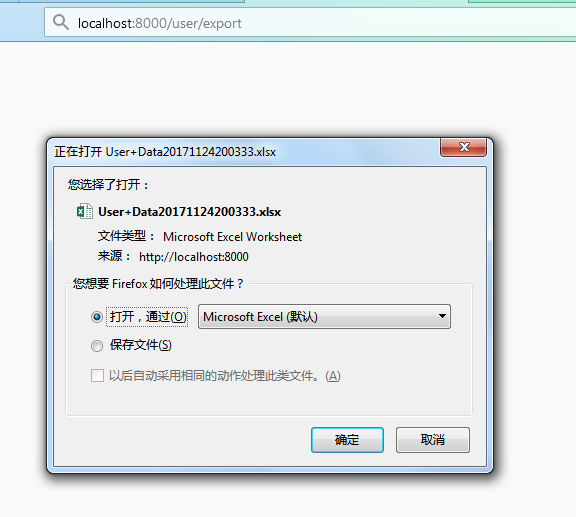
7. 项目目录结构
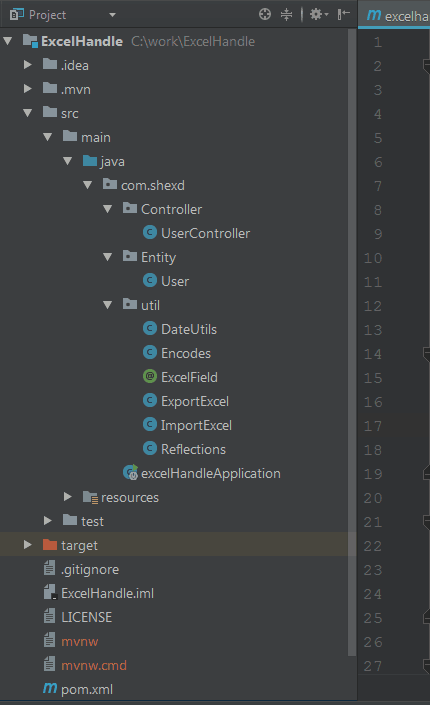
8. 小结
本文简单介绍了利用Java注解和反射对Excel进行操作的基本原理,并实例进行详细说明。
Java基于注解和反射导入导出Excel
注:本文著作权归作者,由demo大师代发,拒绝转载,转载需要作者授权




















 2811
2811











 被折叠的 条评论
为什么被折叠?
被折叠的 条评论
为什么被折叠?








